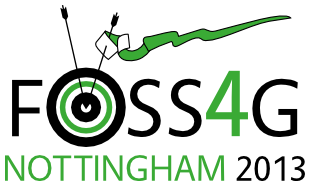Presentation
Web-based Participatory GIS With Data Collection In The Field: A Prototype Architecture
Marco Minghini (Politecnico di Milano - DICA) with Maria Antonia Brovelli (Politecnico di Milano - DICA), Giorgio Zamboni (Politecnico di Milano - DICA)
15:30 on Thursday 19th September (in Session 11, starting at 2:30 p.m., Banqueting Suite)
Show in Timetable
Driven by the rise of Web 2.0 and the non-stop spread of mobile device sensors, the concept of PGIS (Participatory GIS) is knowing a new, revolutionary era. This research investigates the opportunity to build up a prototype of Participatory GIS, with completely FOSS architecture, in which data directly comes from field surveys carried out by users. As a result, the system should increase public active participation in data creation and sharing, besides enlarging the knowledge up to the local level. Open Data Kit suite allows users to collect geotagged multimedia information using mobile devices with on-board location sensors (e.g. a GPS receiver). Thanks to an authentication mechanism, on field-captured data is sent to a server and stored into a PostgreSQL database with PostGIS spatial extension. GeoServer is then responsible for data dissemination on the Web. On the client- side, different OpenLayers and Leaflet based solutions allow data visualization on both traditional computers and mobile platforms. The designed architecture provided support for FOSS usage in the process of gathering, uploading and WMS/WFS publishing information collected in situ. GIS user participation could thus be substantially increased, making this innovative bottom-up approach a key factor for fostering, speeding and improving decision-processes.
